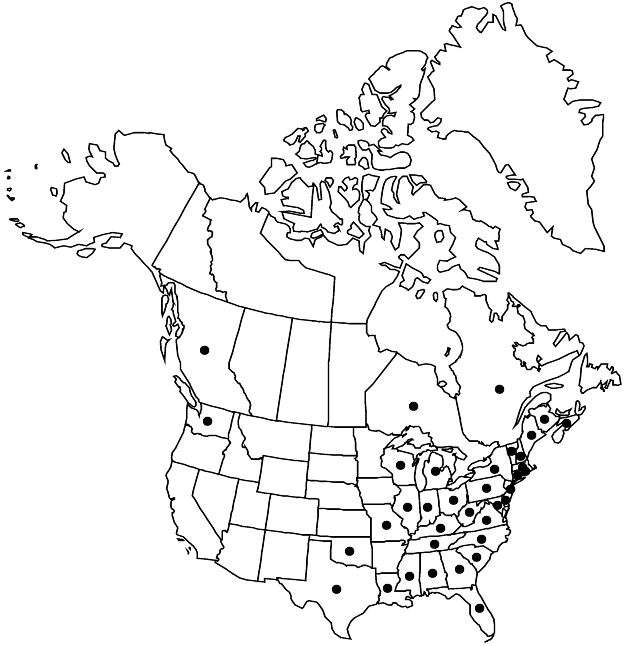Vaccinium corymbosum
Sp. Pl. 1: 350. 1753,.
Plants erect, not colonial, sometimes suckering, 10–50 dm; twigs green, angular to terete, usually hairy in lines. Leaves usually deciduous; blade dark green, ovate to narrowly elliptic, 15–70 × 10–25 mm, subcoriaceous, margins sharply serrate or entire, surfaces glabrous or hairy abaxially. Flowers: calyx green, glabrous; corolla white to pink, ± cylindric, 5–12 mm; filaments usually ciliate. Berries dull black to blue, glaucous, 4–12 mm diam., glabrous. Seeds 10–20(–25), ca. 1.2 mm. 2n = 24, 48, 72.
Phenology: Flowering spring(-early summer).
Habitat: Open swamps, bogs, sandy margins of lakes, ponds, and streams, flatwoods, gray-birch scrub, pine barrens, mires, bay heads, upland ericaceous meadows, upland woods, ravines, mountain summits
Elevation: 0-1600 m
Distribution

B.C., N.B., N.S., Ont., Que., Ala., Conn., Del., Fla., Ga., Ill., Ind., Ky., La., Maine, Md., Mass., Mich., Miss., Mo., N.H., N.J., N.Y., N.C., Ohio, Okla., Pa., R.I., S.C., Tenn., Tex., Vt., Va., Wash., W.Va., Wis., introduced in Europe (Britain, The Netherlands), e Asia (Japan), Pacific Islands (New Zealand).
Discussion
Every morphological variant of the high-bush blueberry has been named formally at one time or another. At least 25 such taxa have been raised to specific rank; none is distinct throughout its putative range nor has the properties normally associated with biological species, including Vaccinium atrococcum and V. elliottii. See S. P. Vander Kloet (1980) for a complete list of synonyms. Feral populations readily become established wherever cultivars have been planted, e.g., Britain, British Columbia, Japan, Missouri, The Netherlands, New Zealand, Washington, and Wisconsin.
